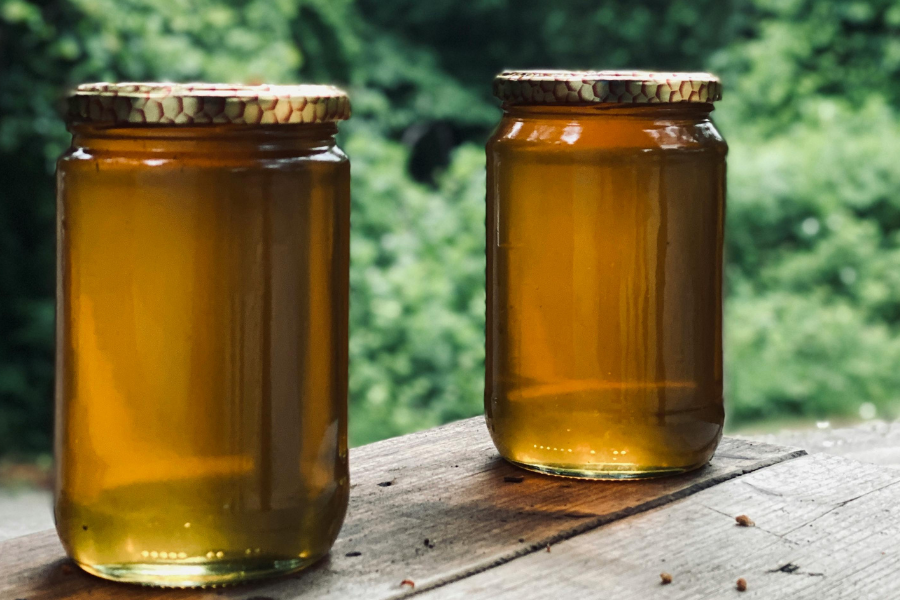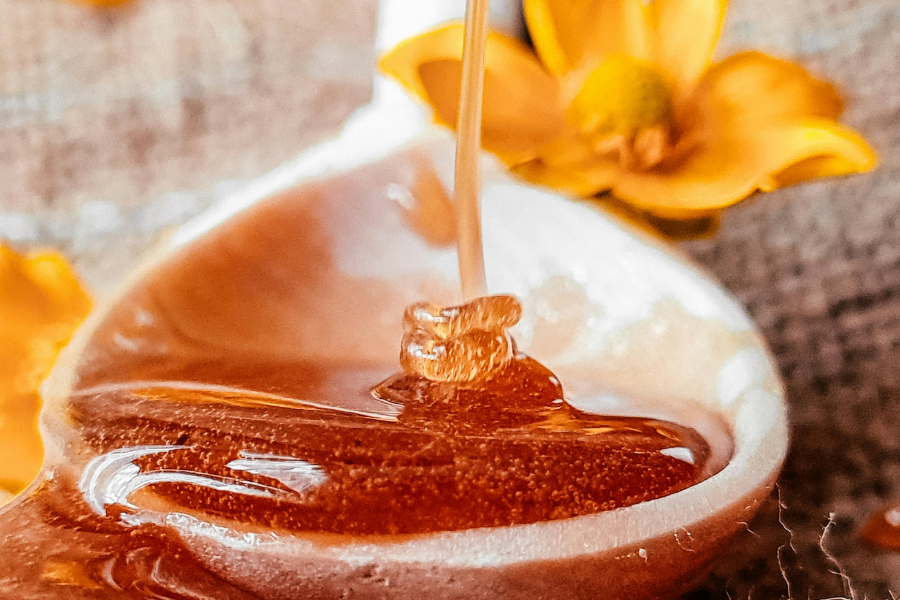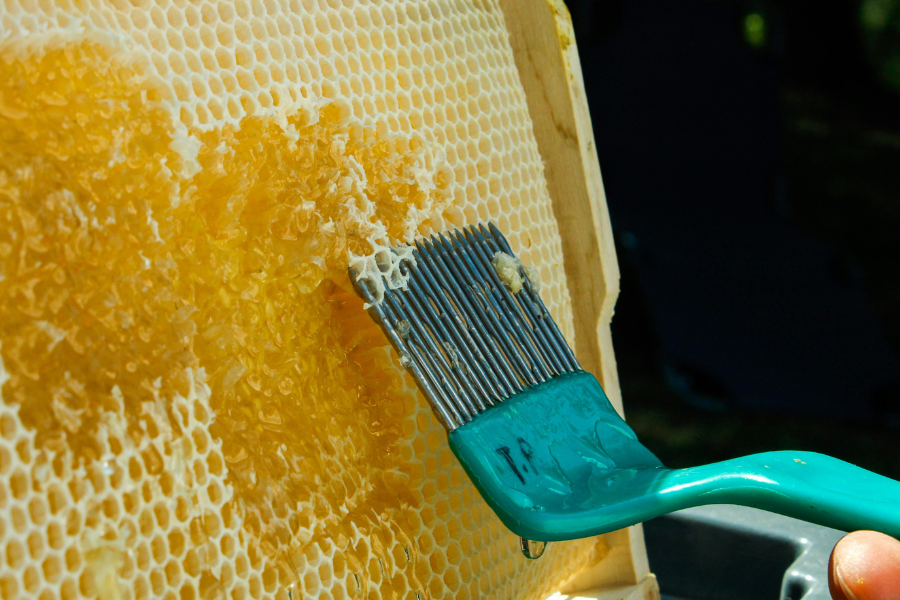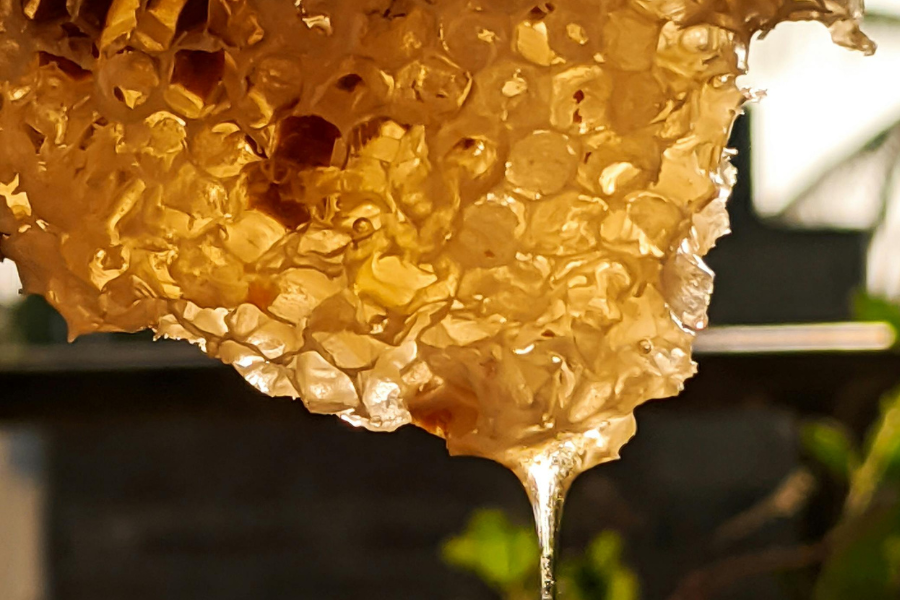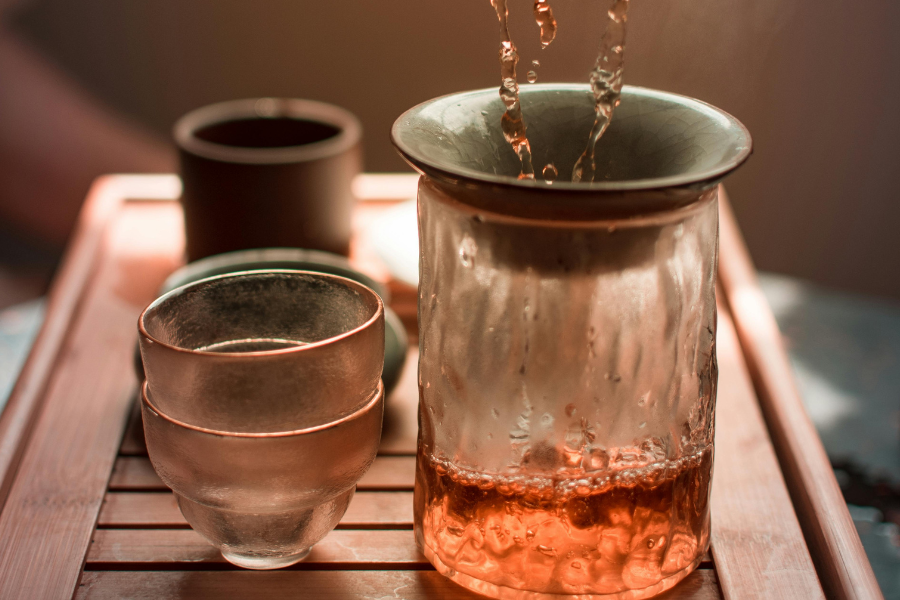Table of Contents
Introduction to Honey Bottling
Bottling honey is an important part of the beekeeping journey, helping to keep your honey fresh and full of its natural flavor. If you’re wondering how to bottle honey the right way, it all starts with using the proper tools—like a bottling tank, an extractor, and squeeze bottles—to make the process smooth and professional. Not only does bottling preserve the unique qualities of your honey, but it also gets it ready to enjoy at home or share with others. In this article, we’ll walk you through the steps for bottling honey, the different types of bottles you can use, and the best ways to store honey so it stays fresh.
1. Honey Bottling Equipment and Supplies
Essential Honey Bottling Tools
Bottling honey doesn’t have to be messy or complicated if you have the right tools. With the proper equipment, you can make the process efficient and hassle-free. Here are some must-haves for a smooth honey bottling experience:
- Honey Bottling Tanks: These tanks are where your honey goes before being poured into jars. They come in different sizes, so you can pick one that matches your needs.
- Honey Extractors: This equipment is key for getting honey out of the comb. It ensures your honey is clean, filtered, and ready for bottling.
- Honey Filling Machines: Filling jars—whether glass or plastic—is much easier with these machines. They save time and reduce spills, making the process cleaner.
- No-Drip Valves: These little tools are lifesavers for preventing sticky messes. They keep the honey flowing smoothly without unwanted drips.
Types of Honey Jars and Bottles
Choosing the right container for your honey is a big deal—it helps keep your honey fresh and makes it look great, especially if you’re selling it. Here are some popular options to consider:
- Glass Jars vs. Plastic Jars: Glass jars give your honey a premium, classy look and help preserve its flavor, while plastic jars are tough, lightweight, and budget-friendly—perfect for larger packaging needs.
- Honey Bear Bottles and Mini Jars: Honey bear bottles are fun, recognizable, and super convenient for everyday use. Mini jars, on the other hand, are adorable and make perfect gifts or samples.
- Bulk Honey Jars: If you’re dealing with larger quantities, bulk jars are the way to go. They’re great for storing and selling honey in bigger batches.
2. Steps to Proper Honey Bottling
Preparing the Honey for Bottling
Before bottling your honey, it’s super important to filter it. This step removes any wax, debris, or other particles that might have made their way in during extraction, ensuring your honey is clean and ready to go.
- Filter Your Honey: Use a fine mesh strainer or honey filter to catch any unwanted bits and leave your honey smooth and pure.
- Check the Moisture Content: Aim for a moisture level of 17–18%. If it’s too high, your honey could start to ferment, so this step is key to keeping it fresh and shelf-stable.
Proper Bottling Techniques
Now it’s time to bottle your honey. Here are some tips to ensure that the process goes smoothly:
- Use a Honey Filling Machine: A honey filler machine can help you fill jars consistently and quickly. This minimizes mess and ensures each jar is filled to the correct level.
- Avoid Air Bubbles: Fill jars slowly, allowing the honey to flow gently from the honey bottling valve to avoid air bubbles.
- No Spills: Using a no-drip honey valve is key to preventing spills during bottling.
Sealing and Labeling Bottled Honey
Once the jars are filled, make sure they are properly sealed and labeled:
- Seal the Jars: Ensure that the lids are tightly closed to preserve the quality of the honey.
- Label the Jars: Professional labeling adds value to your honey. Include the product name, net weight, and origin.
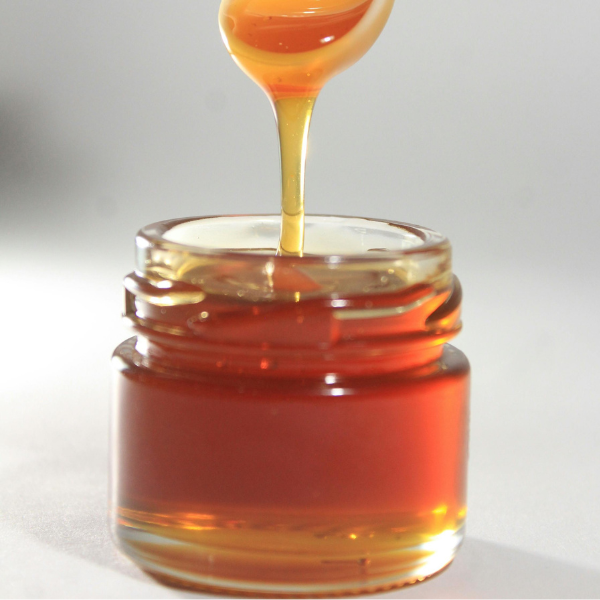
3. Advanced Honey Bottling Techniques
Honey Packaging for Commercial Use
For larger-scale honey production, you’ll need commercial-grade honey bottling equipment. Consider using bulk honey jars or honey bottling tanks for efficient processing. This will streamline your bottling process and reduce labor costs.
Storing Bottled Honey
Once bottled, honey needs to be stored properly to maintain its freshness. Be sure to:
- Store in a Cool, Dry Place: Ideal storage temperatures are between 50°F and 70°F.
- Avoid Light Exposure: Exposure to light can degrade honey, so store bottles in a dark area to preserve its flavor and color.
4. Effective Solutions for Optimizing Honey Bottling and Packaging
Scaling up your honey production? Here’s how to make the process smoother, more efficient, and market-friendly:
Streamlined Production with Bottling Machines
If you’re ready to take your beekeeping operation to the next level, honey bottling and filling machines are a game-changer. They save time, reduce labor, and make the whole process faster without sacrificing quality.
Choosing the Right Containers
Your packaging matters, especially for different markets. Glass jars give your honey a premium feel for retail sales, while plastic and bulk jars are more practical and cost-effective for wholesale or larger quantities. Including fun options like honey bear bottles can also attract a wider audience.
Storing Honey for Long-Term Quality
Good storage is key to keeping honey fresh and delicious. Store it at the right temperature and away from sunlight to maintain its quality for months and minimize crystallization.
Labeling and Branding to Stand Out
A great label can make all the difference. Highlight your honey’s origin, benefits, and flavor profile with clear, professional designs. Unique packaging styles also help your product stand out in a crowded market.
Cleaner Bottling with No-Drip Valves
No-drip valves are a small investment that makes a big impact. They prevent sticky messes, reduce waste, and speed up the bottling process—all while keeping things tidy.
Bulk Packaging for Big Operations
If you’re handling large quantities, bulk jars and bottling tanks are must-haves. They let you bottle honey efficiently and cut down on labor costs, making high-volume production much easier.
Boost Productivity with Packaging Machines
For beekeepers looking to scale even further, honey packaging machines automate the process. They’re fast, efficient, and ensure consistent quality with every jar.
Unique Bottles for Raw Honey
Raw honey lovers appreciate thoughtful packaging. Mini jars and squeeze bottles are perfect for gift shops or health-conscious customers who prefer natural, unfiltered honey.
Exporting Honey in Bulk
Expanding into international markets? Bulk jars are a great solution. They’re efficient, reduce shipping costs, and meet the standards needed for exporting honey.
Go Green with Eco-Friendly Packaging
Eco-conscious consumers love sustainable options. Biodegradable plastic jars or recyclable glass containers can set your brand apart and show your commitment to the environment.
By focusing on efficiency, creativity, and sustainability, you can take your beekeeping business to new heights!

5. Maximizing Honey Shelf Life Through Proper Bottling Techniques
- Use airtight, UV-resistant containers (such as glass honey jars or honey squeeze bottles) to protect honey from moisture and light.
- Consider investing in a honey bottling machine with a no-drip valve to remove excess moisture during filling, preventing crystallization or fermentation.
- High-quality plastic honey jars designed for bulk storage help maintain honey’s purity and extend shelf life while making it easy to dispense.
6. Enhancing Customer Appeal Through Attractive Honey Packaging
- Utilize aesthetically pleasing packaging options, such as mini jars of honey, honey bear bottles, or custom-designed honey bottling supplies to differentiate your product.
- Invest in premium packaging like honey bear jars bulk to create a memorable and appealing presentation.
- Consider eco-friendly packaging materials (biodegradable labels, reusable jars) to attract environmentally conscious consumers.
- Tailor your packaging design to reflect your brand’s values and set your honey apart from competitors.
7. Streamlining the Bottling Process for Increased Efficiency
- Invest in honey filling machines with adjustable flow settings to ensure smooth, quick filling without wastage.
- Use automated honey filling and capping systems to reduce labor time and minimize human error.
- Implement honey tanks with spigot gates for easy transfer of honey into jars or bottles, reducing mess and contamination risks.
- Streamline your bottling process to meet higher production demands while maintaining product quality.
8. Optimizing the Honey Bottling Process with Specialized Equipment
- Honey bottling tanks with adjustable valves ensure precise, controlled dispensing without leaks.
- Invest in automated honey filling machines for faster, more efficient bottling, reducing labor costs during peak harvest periods.
- Use bulk honey jars for large-scale production, saving on packaging costs and ensuring uniformity in product packaging.
- Integrate honey filtering equipment before bottling to remove any residual wax or impurities, ensuring a clean, high-quality product.
- A no-drip honey valve minimizes waste and mess, improving packaging efficiency and product presentation.
9. Enhancing Honey Quality and Packaging for Premium Appeal
- Glass Honey Jars: These are a premium, eco-friendly choice that keeps your honey tasting great and free from any chemical leaching. Plus, they’re a more sustainable alternative to plastic.
- Honey Bear Bottles: Fun and easy to recognize, honey bear bottles are a favorite for their playful design and convenience. They’re perfect for keeping your honey fresh and appealing to customers.
- Customized Labels: Personalize your jars with labels that include batch numbers, expiration dates, and local sourcing info. It’s a simple way to build trust and make your product stand out.
- Cold-Pressed Extraction: Using cold-pressed methods helps keep all the good stuff—like enzymes and antioxidants—intact, so your honey stays as natural and nutritious as possible.
- Airtight Honey Tanks: Store your honey in airtight tanks to lock in freshness and flavor. Keeping air out ensures your honey stays top-quality for longer.

10. Key Considerations for Proper Honey Bottling and Storage
- Allow honey to settle for 24 to 48 hours before bottling to remove air bubbles.
- Filter raw honey to remove impurities before bottling.
- Store honey in glass jars for better flavor preservation, but plastic bottles are also fine for short-term storage.
- Keep honey away from direct sunlight to avoid degradation of quality.
- Honey should be stored in a cool, dry place at room temperature.
- When heating honey, use low temperatures to preserve its beneficial properties.
- Check for purity through crystallization or by sourcing from trusted suppliers.
- Honey can last indefinitely if stored properly, but its flavor and quality can improve with time.
Conclusion
Bottling honey is a critical skill for beekeepers, whether for personal use or larger commercial ventures. With the right equipment, such as honey bottling machines, honey filler machines, and proper storage techniques, you can ensure your honey is preserved and packaged to retain its freshness and appeal. By mastering the honey bottling process, you’ll produce high-quality honey that stands out in the market.
Frequently Asked Questions About Honey Bottling
- How do you bottle honey without air bubbles?
- Fill the jars slowly, using a honey filler machine to control the flow of honey and minimize air bubbles.
- Fill the jars slowly, using a honey filler machine to control the flow of honey and minimize air bubbles.
- What is the best honey bottling equipment for beginners?
- A manual honey bottling tank and honey extractor equipment are great for beginners, offering simplicity and control.
- A manual honey bottling tank and honey extractor equipment are great for beginners, offering simplicity and control.
- How do you keep honey from crystallizing in the bottle?
- Store honey at a consistent temperature and avoid refrigeration to prevent crystallization.
- Store honey at a consistent temperature and avoid refrigeration to prevent crystallization.
- What type of honey jar is best for long-term storage?
- Glass honey jars are ideal for long-term storage due to their ability to preserve honey’s quality and flavor.
- Glass honey jars are ideal for long-term storage due to their ability to preserve honey’s quality and flavor.
- How do you label honey bottles for sale?
- Labels should include essential information, such as honey origin, weight, and producer details, and be clear and attractive for consumers.

